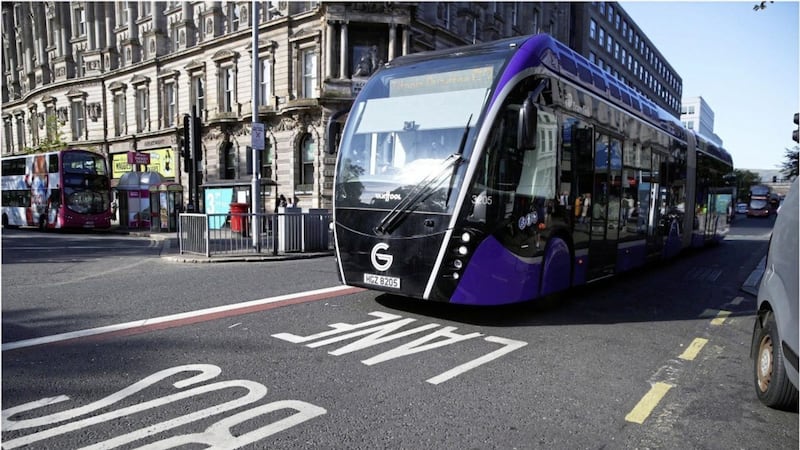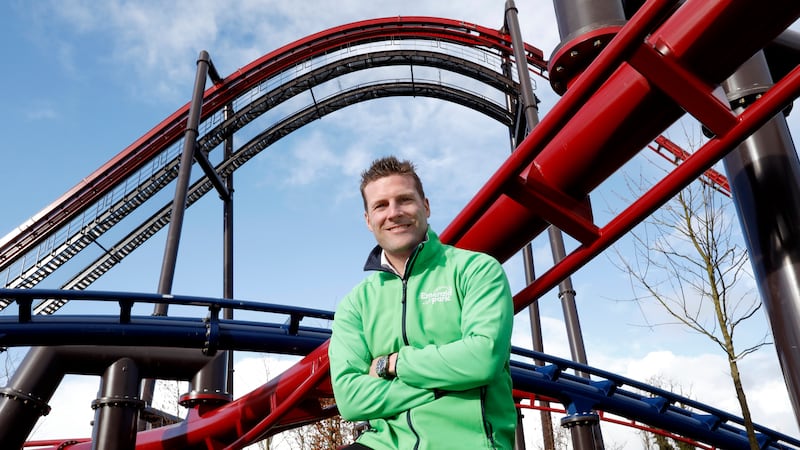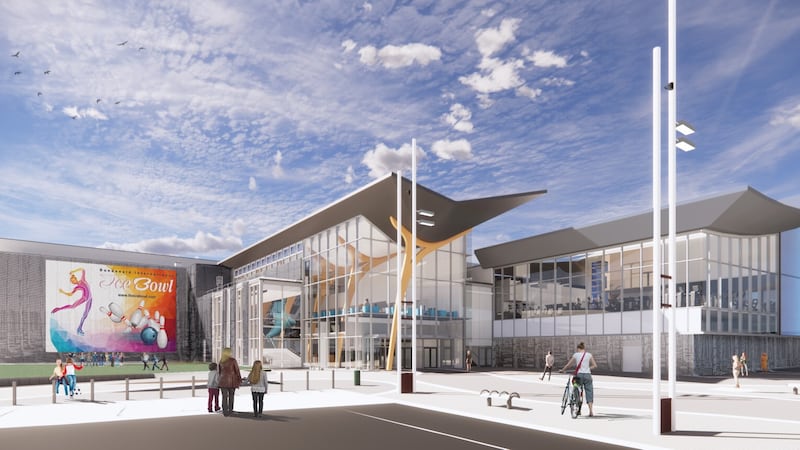ECONOMICS is everywhere, and over the last year we’ve seen it play out in purple on the roads of Belfast in the form of 'Glider Economics'.
When the Department for Infrastructure and Translink embarked on the Glider project, what few people maybe realised was that it was the beginning of a major economic exercise to change consumer behaviour and to ‘nudge’ us into making better decisions through a series of small and larger interventions.
Whilst this project created resistance in the early stages, it would be hard to argue that the Glider hasn’t been a success given the figures to back it up.
Passenger numbers have increased by 30 per cent in parts of Belfast in its first year meaning about 1.67 million fewer car journeys, reducing congestion and enhancing city air quality. Public transport usage is now at a 20-year high, with the Glider contributing to this.
So, what was the problem the Glider project set out to address and how did they go about it?
Firstly, a major problem is that Belfast is one of the worst cities in the UK for air pollution, making it very different from the rest of Northern Ireland, which has good air quality. Recently Belfast was deemed to have “dangerously high” levels of pollutants, with nitrogen oxide levels so high in some areas that they breached legal limits.
Clearly this was contributing to making it less desirable for people to live in the city, and reducing the number of cars coming into Belfast was seen as a key way of addressing this.
Secondly, Belfast has a very considerable problem with congestion. Local motorists spent an average of 190 hours stuck in traffic last year, according to one report, making Belfast the second worst city in the UK after London. It was estimated that this cost £1,400 per driver in lost time.
There were a very wide range of routes down which the policy-makers and decision-makers in government could have gone down to try to address these problems and there are many examples around the world of policies that have been put in place to do.
Perhaps the best-known to us in this part of the world is the London congestion charge, which charges motorists in the UK capital to use road space during the working day, including peak commuting hours, in order to nudge them towards using public transport or to cycle. Without this charge, demand for road space would massively exceed supply, resulting in chronic congestion with a wide range of consequences.
In addition, London has introduced an Ultra Low Emissions Zone to help improve air quality. This effectively charge anyone without a low emissions vehicle for having their car within the zone 24-hours per day, seven days per week.
Another interesting example is in Paris, which in 2016 started restricting vehicles in the city based on their number plate, with odd numbers banned on one day and even the next. In doing so, they effectively took a leaf from Athens’s playbook during the 1990s.
With the Glider approach in Belfast, the policy makers have chosen not to go down the route of banning cars or putting an explicit financial charge on driving in the city. What they have done instead is nudged people to take their cars off the road at peak times at least. They have done this by radically rebalancing the relative attractiveness between driving and using public transport or cycling through a series of small and larger changes.
On the one hand, they have effectively increased the cost of taking the car; though the cost motorists pay in the Belfast is their time. Whilst public transport in the form of the Glider has become quicker, more convenient (e.g increased availability of park & ride), more comfortable and easier overall, driving into the city has become more difficult as a result of the changes to bus and car lanes.
Some of the things that have been done to make the Glider more attractive than driving include upping the quality of the journey as well as reducing the time it takes. This includes things like introducing pre-pay ticketing before getting on the Glider. It also includes increasing the number of doors to make boarding faster and less stressful. On-board, there is now wifi and charging points for mobile phones.
Ultimately though, the frequency and reliability (i.e. predictable commute time) of the Glider as well as the speed with which it can cross the city in its dedicated bus lanes is the biggest seller. Reducing two car lanes to one to accommodate the Glider means that motorists for battling for half the road space than they previously were, and they are paying for this privilege with time.
In the Glider project, there are parallels with the approach of Downing Street’s infamous 'Nudge Unit' which was the world’s first government institution that uses behavioural economics to examine and influence human behaviour, to ‘nudge’ us into making better decisions. Seemingly small, subtle and low-cost solutions, or nudges, have led to huge improvements across tax, healthcare, pensions, employment, crime reduction, energy conservation and economic growth.
The nudge, or a type of Glider Economic thinking, should become hard-wired into policy making in Northern Ireland to help deliver a more efficient and effective public and private sector economy. We should be asking ourselves in the absence of water charges how we can nudge members of the public to make use of this important public service in a more sustainable way.
:: Richard Ramsey is the Ulster Bank regional chief economist








